Lowercase identification Alphabet Worksheets for Ages 4-5
5 filtered results
-
From - To
Help your little learners master lowercase letters with our engaging Lowercase Identification Alphabet Worksheets designed specifically for ages 4-5. These fun and interactive worksheets provide essential practice for young children as they recognize, trace, and identify lowercase letters in various contexts. Perfect for preschool and kindergarten, our resources support early literacy skills, making learning enjoyable through colorful illustrations and exciting activities. Incorporate these printable worksheets into your teaching routine to boost letter recognition, foster a love for reading, and enhance fine motor skills. Start your child's journey to reading success today with our comprehensive and kid-friendly alphabet resources!
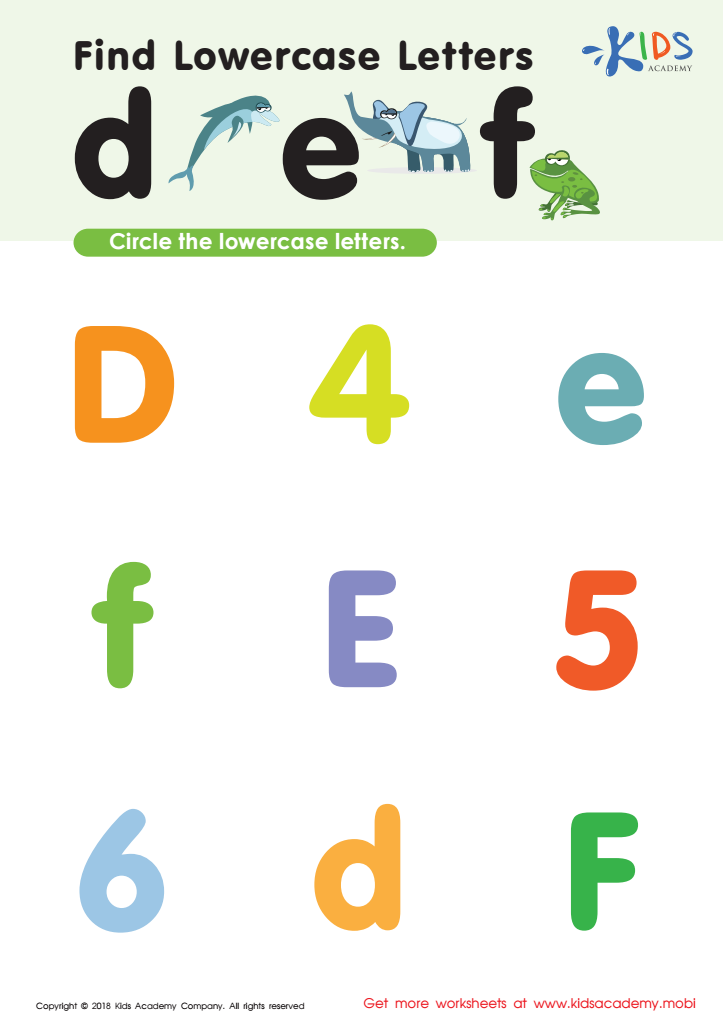

Find Lowercase Letters d e f Worksheet
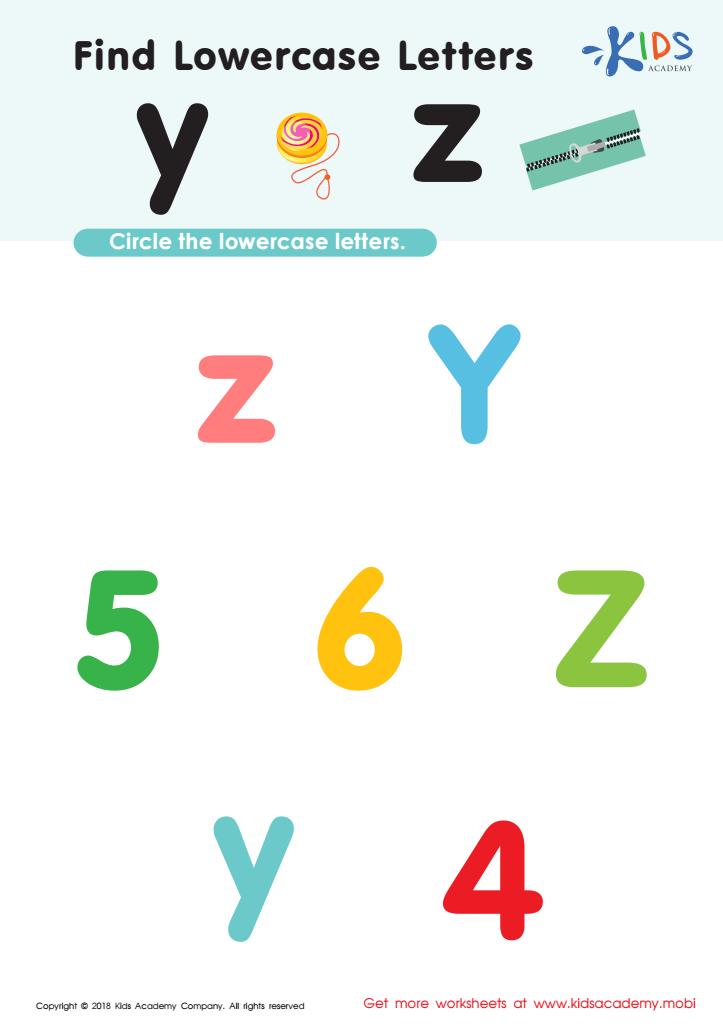

Find Lowercase Letters y z Worksheet
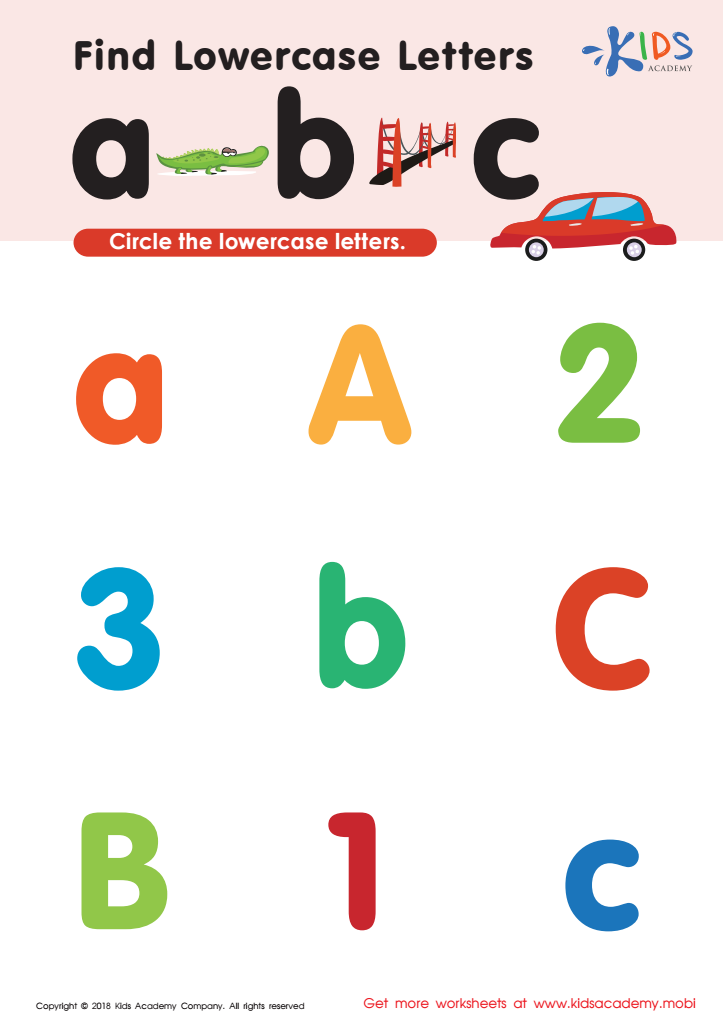

Find lowercase letters a b c Worksheet
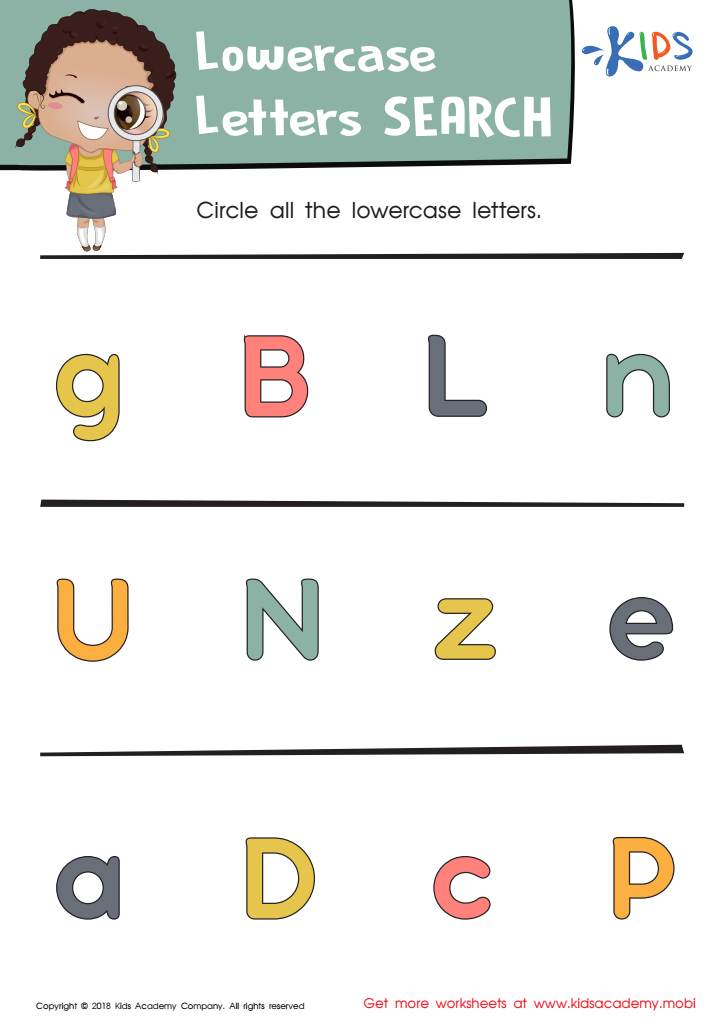

Lowercase Letters Search: Assessment Worksheet
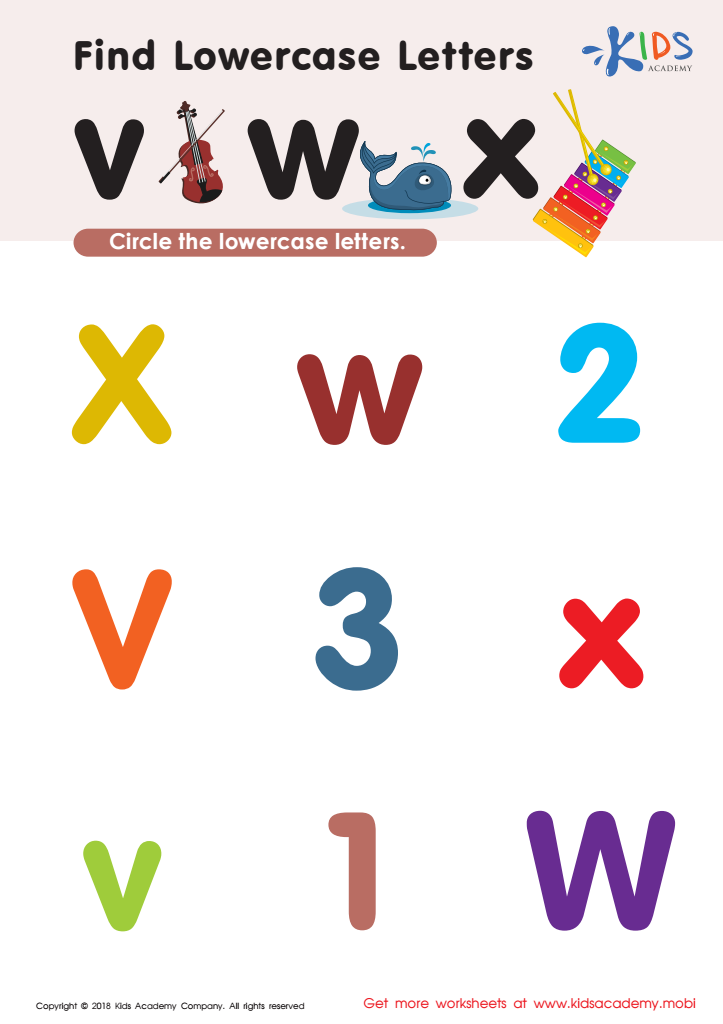

Find Lowercase Letters v w x Worksheet
Parents and teachers should care about lowercase letter identification for children aged 4-5 because this skill is foundational for literacy development. Early mastery of lowercase letters is crucial, as children will encounter these letters frequently in printed materials, including books, signs, and digital media. Understanding lowercase letters enables children to decode words more efficiently and promotes reading fluency.
Furthermore, recognizing lowercase letters boosts writing skills. Young learners begin forming words by assimilating both uppercase and lowercase letters, often using more lowercase in their writing. By gaining proficiency in identifying and writing lowercase letters, children can express themselves more clearly, fostering confidence in their communication abilities.
Additionally, engaging with lowercase letters can promote phonemic awareness, as children learn to match sounds with letters. This connection between sounds and letters is essential for developing reading comprehension skills as they progress.
Creating a supportive and stimulating learning environment that encourages lowercase letter recognition can significantly impact a child's educational journey. By emphasizing this important aspect of language development, parents and teachers can help cultivate a solid foundation for future reading and writing skills, ultimately setting children up for academic success.
 Assign to My Students
Assign to My Students



















